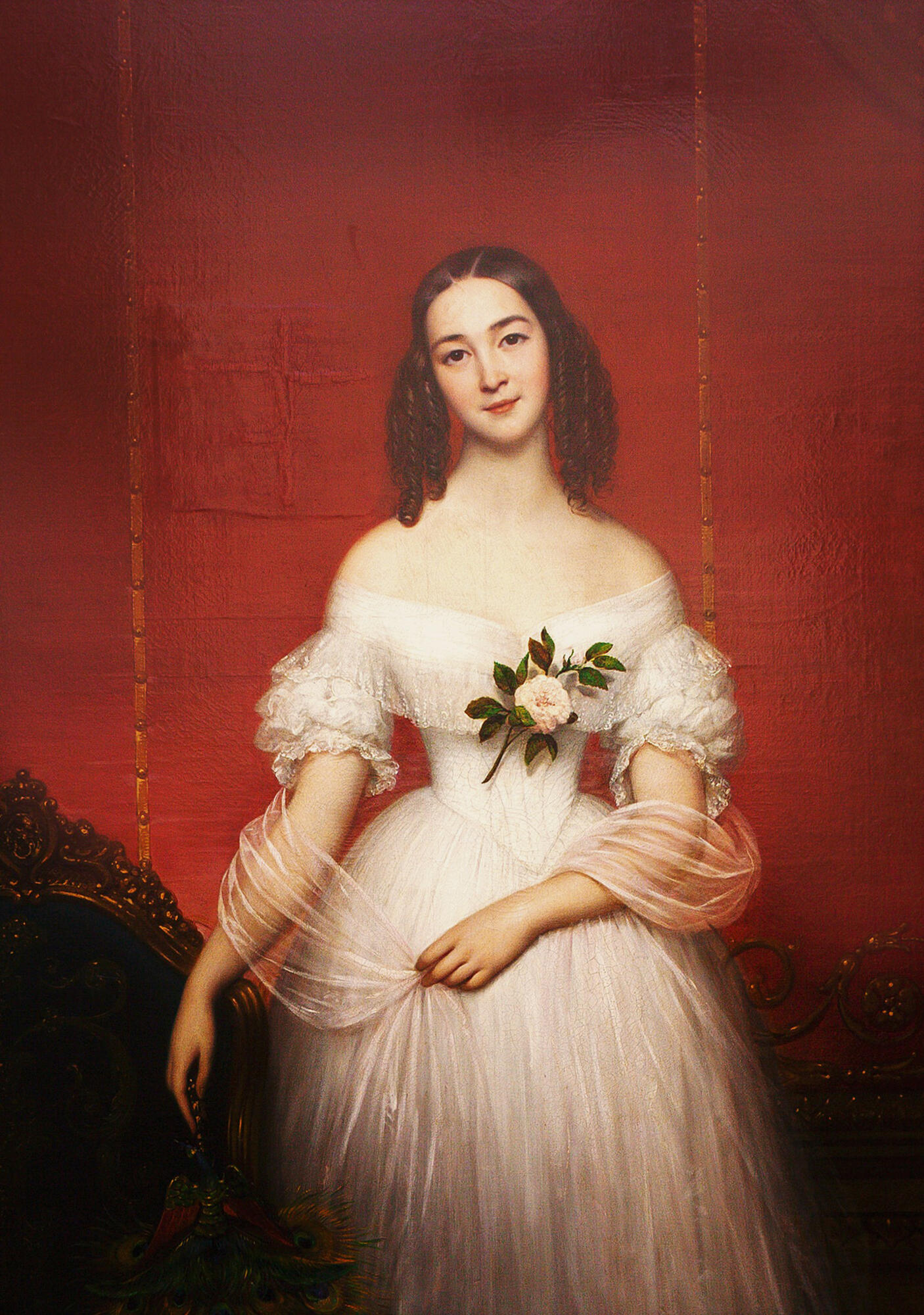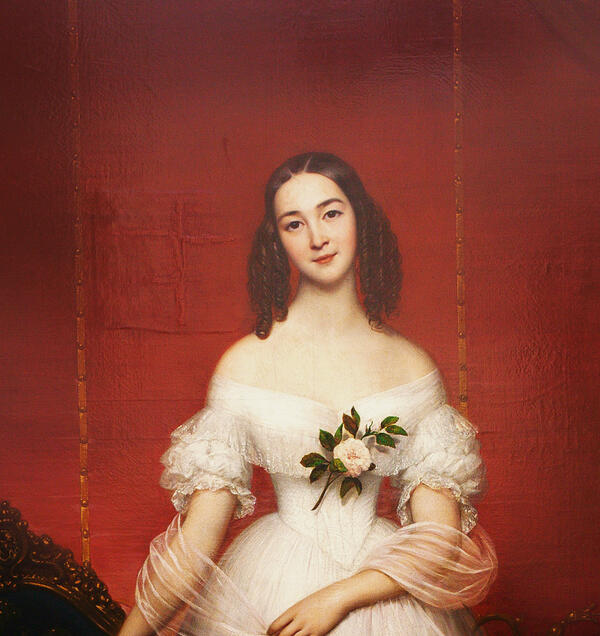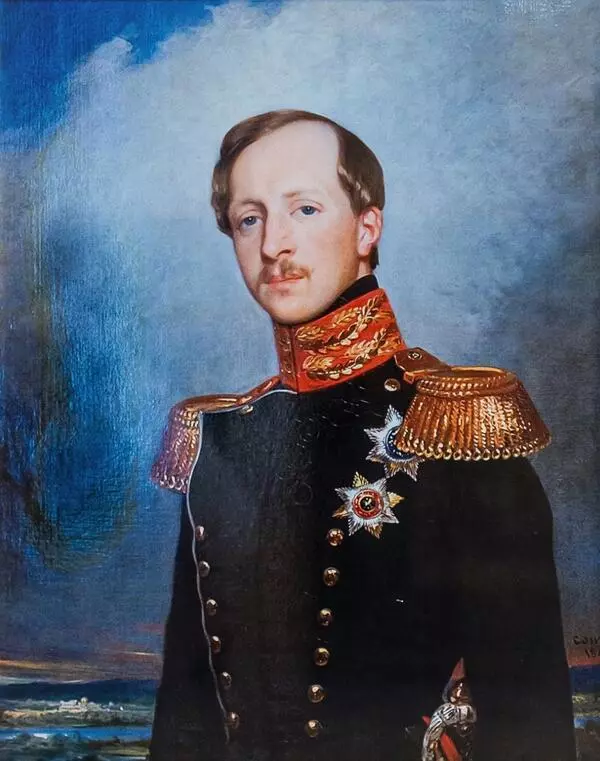Joseph-Désiré Court was born near Paris, in the city of Rouen, into a poor family. His parents supported his interest in art and enrolled him to a municipal drawing school. Then he entered the Academy of Fine Arts in Paris and won the Prix de Rome. To participate in the competition, young artists had to depict one of the biblical stories in the Academic style. The Roman Grand Prize allowed to him travel to the capital of Italy at the expense of the state and to be trained by local craftsmen. Court became famous as a painter of historical subjects, presently his canvases are housed in the largest museums in the world, in the Versailles and the Louvre.
In 1839, the artist visited Russia. He presented nine female portraits at an exhibition in the Academy of Fine Arts. A journalist of the publication ‘The Reader’s Library’ described the artist as “a smart, brisk, experienced, charming painter”.
Noble Russian families found out about the artist and during their travels in Europe began to visit his workshop in Paris. In 1840, the Shcherbatov family commissioned him to create four portraits: the painter portrayed the governor-general of Moscow Alexey Shcherbatov, his wife Sophia, nee Apraksina, and two daughters — Ekaterina and Olga. All paintings after the revolution became part of museum collections. The portraits of the parents were transferred to the Pushkin Museum in Moscow, the portrait of the eldest daughter Ekaterina — to the Hermitage Museum. The Tomsk Regional Art Museum houses the portrait of 16-year-old Olga.
This canvas is a textbook example of a salon portrait. Such portraits conveyed the artistic tastes of the nobility at that time. The heroine’s hair is smoothly combed into two parts. It is curled and graciously falls down to her shoulders.
The Princess wears a ball gown in a typical style for the 1840s: the elongated skirt of the bell-shaped dress emphasizes her slender figure, the waist is lowered, the bodice goes into a narrow point, the wide neckline shows the shoulders. The rose on her dress is a traditional attribute with which outfits of famed beauties were decorated, a symbol of youth and virtue.
For many years it was not possible to established who was depicted in the portrait displayed in the Tomsk Museum. Only in the 1990s, museum staff members were able to ascertain who created the canvas and who is portrayed by examining archives and literary sources.
In 1839, the artist visited Russia. He presented nine female portraits at an exhibition in the Academy of Fine Arts. A journalist of the publication ‘The Reader’s Library’ described the artist as “a smart, brisk, experienced, charming painter”.
Noble Russian families found out about the artist and during their travels in Europe began to visit his workshop in Paris. In 1840, the Shcherbatov family commissioned him to create four portraits: the painter portrayed the governor-general of Moscow Alexey Shcherbatov, his wife Sophia, nee Apraksina, and two daughters — Ekaterina and Olga. All paintings after the revolution became part of museum collections. The portraits of the parents were transferred to the Pushkin Museum in Moscow, the portrait of the eldest daughter Ekaterina — to the Hermitage Museum. The Tomsk Regional Art Museum houses the portrait of 16-year-old Olga.
This canvas is a textbook example of a salon portrait. Such portraits conveyed the artistic tastes of the nobility at that time. The heroine’s hair is smoothly combed into two parts. It is curled and graciously falls down to her shoulders.
The Princess wears a ball gown in a typical style for the 1840s: the elongated skirt of the bell-shaped dress emphasizes her slender figure, the waist is lowered, the bodice goes into a narrow point, the wide neckline shows the shoulders. The rose on her dress is a traditional attribute with which outfits of famed beauties were decorated, a symbol of youth and virtue.
For many years it was not possible to established who was depicted in the portrait displayed in the Tomsk Museum. Only in the 1990s, museum staff members were able to ascertain who created the canvas and who is portrayed by examining archives and literary sources.




